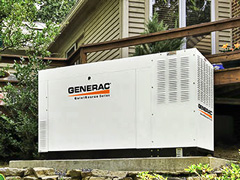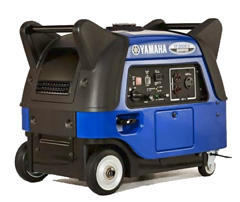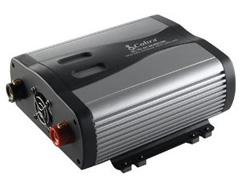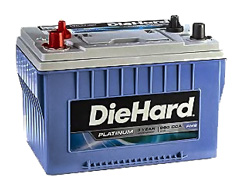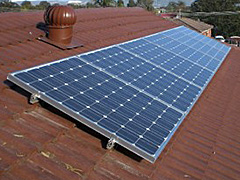|
|
Alternative Power Sources While the Preparing for Disaster article covers a rather extreme scenario for a limited period of time (e.g., Level I — surviving three days after a major devastation with no support services, etc.), many of us are facing a different situation right now: coping for multiple weeks without electricity. As of this writing, we've been without power for the past 7 days and it's not expected to be restored for perhaps another week. Lots of other folks impacted by Sandy are in the same boat. Our houses are intact, but without electric service, it's tough to get by. No electricity means no heat, no refrigeration, (no microwave!), limited lighting, dead electronics, etc. No wonder large numbers have fled their homes and sought shelter with family and friends or in hotels. But, if you need or want to stay, having one or more alternative power sources will make a HUGE difference in your quality of life. Here are your options: GENERATOR If you're blacked out but your neighbor has a generator, you have every right to be jealous. Having a generator is the only way to maintain anything approaching a normal quality of civilized life. But there are negatives too. You have two main choices when it comes to generators: an expensive fixed-in-place unit or a portable genset. Whole House Type
This is the nee plus ultra of alternative power sources. Installed on a concrete pad and hooked to a large fuel supply, a fixed unit is the only option that will allow you to live a fully normal life, as if utility power was still flowing to your home. Figure on $10,000 to $15,000 all-in. This includes delivery, placement, fuel hookup, and connection by a licensed electrician. Most will automatically switch on in a blackout and run unattended. It is the best option if you are frequently away from home and want to make sure your pipes don't freeze up in winter. Best fuel source is piped natural gas if you have it. Second best is a very large fixed tank (preferably underground) of LP gas. Third best is diesel, which can often run off your heating oil supply (if you have it). Generally sized at 20KW and up, these fixed units are capable of running all your appliances, including 220V ones like ovens, dryers, water heaters, and air conditioners. Naturally, we'd all love to have a whole house generator, but cost (both to buy and to run) is an issue and they do need preventative maintenance. The more expensive units are both more durable and quieter. Generac is a well-known brand. Portable Genset
This is the kind you're most likely to buy after an outage (if you can find one). Unfortunately, the lower-cost generators that arrive by the truckload after a storm are often noisy fuel-hogs. The lower-end units are also built for very light duty and may only last for a few hundred hours of operation. Smaller ones don't hold much gas and may only run for two or three hours at a time. The typical 2,000 watt portable generator is the equivalent of a single electric circuit in your home (i.e. one circuit breaker's worth of juice). That's sufficient to keep your refrigerator and/or furnace running, plus a few lights and chargers. It may be all you need for emergency survival, and it's much, much better than nothing. However, if you don't have a generator but are lucky enough to find one for sale, you still might not be able use it. Nearly all run on gasoline, and that's very hard to come by at the moment. Plus, you'll need two essential items that might not be available either. First, you'll need a Jerrycan (preferably several) to store and transport the gas; they are all sold out locally. Next, you'll need a long, heavy gauge extension cord to bring the current in from the outside (where the generator MUST sit) to where you need it. Those are also all sold out. In a perfect world, you'd have an electrician do a proper installation, so that the power can get to your furnace motor and built-in refrigerator (neither of which have plugs). Otherwise, you'd have to resort to an unsafe "hack" wiring job, which I'd never recommend. A big step up from the low-end home center generators are the "DC inverter" type units such as those made by Honda and Yamaha. These are more efficient and much quieter (meaning they won't burn as much gas and won't make your neighbors hate you as much). Inverters also provide much "cleaner" (better regulated) power for computers and other sensitive electronics. These start at about $1,000. A further step up are the "tri-fuel" options. These burn propane (from a BBQ tank), natural gas, and gasoline. As an example, the 2,800 watt Yamaha will run for a full 24 hours on a single 20 lb. propane tank and then switch to the internal 3 gallon gas tank for an additional 12 hours of operation. Figure about $1,800 and up for one of these. Buying the right size unit is important. This wattage calculator may come in handy. Remember that motors create a surge when starting up and you'll need extra current to cover that. Also, If you have a water well pump, you'll likely need a larger 220V genset for that essential application. A word of warning: be sure to chain your portable generator to a fixed object. There have been numerous reports of generator thefts recently. Gas cans too. Apparently, crooks ride around the neighborhood listening for running generators. They return at night to grab them from darkened homes Lastly, if you're planning to run your generator by siphoning gasoline from your car, think again. Most modern cars have anti-siphon mechanisms in their tanks. If yours has such a device, the only way you're going to get gas out of it is by disconnecting the fuel line from the engine and using the motor's low pressure fuel pump to fill your Jerrycan. The procedure is not especially difficult but you have to have tools and some mechanical skill and know EXACTLY what you're doing. Luckily, there's an online resource called JustAnswer.com that may be able to help you. For a fee of between $13 and $20, a certified mechanic will consult and provide instructions on the procedure for your specific vehicle. 12V Inverter
In a pinch, you can attach a heavy-duty inverter to your car battery. With the engine running, you can convert the car's 12 volt DC current to 110 volt AC power. Good units can deliver 1000 watts or more, enough to power your furnace for a few hours to keep the house from freezing up, or to run your refrigerator and keep your food from spoiling. Of course, you'll be burning plenty of gasoline (and creating pollution) by idling your engine for hours on end. But desperate times call for desperate measures. Tripp-Lite makes the best inverters but they're rather expensive. The Cobra unit pictured is also quite good for the price ($78) and has a built-in 5V USB charger. Marine Battery
A good marine battery will set you back between $200 and $300 but may be the best option for apartment dwellers, or as an adjunct to a generator that you don't want to keep running all the time. A boat battery is built to withstand deep discharges and the Absorbed Glass Mat type doesn't have acid sloshing around inside. It's completely sealed and nothing can leak out. The battery will keep your cell phone charged for weeks and your laptop computer running many days. It will also power a bright light for a very long time. Of course, you'll also need a charger when it runs down. The battery will also run the inverter above for a limited time (an hour or two or three depending upon battery size and load) but in an emergency, those could be some critically important hours. For maximum life, get a clip-on adapter so you can run your car phone chargers and such directly off the battery.
Solar Panels
The true ultimate alternative power source is a full-up rooftop photovoltaic array. But that's a subject for a whole article in itself. Remember that few solar installations are intended to run totally "off the grid" or have sufficient battery backup to last through several cloudy days. Having abundant and reliable electric power is something we take for granted. When it goes away, we suddenly realize how much our modern lives are dependent upon a steady supply of electricity. With the exception of a full solar installation, none of these options are as good as juice from your good old utility company. However, having them will make an extended blackout much more bearable.
|

